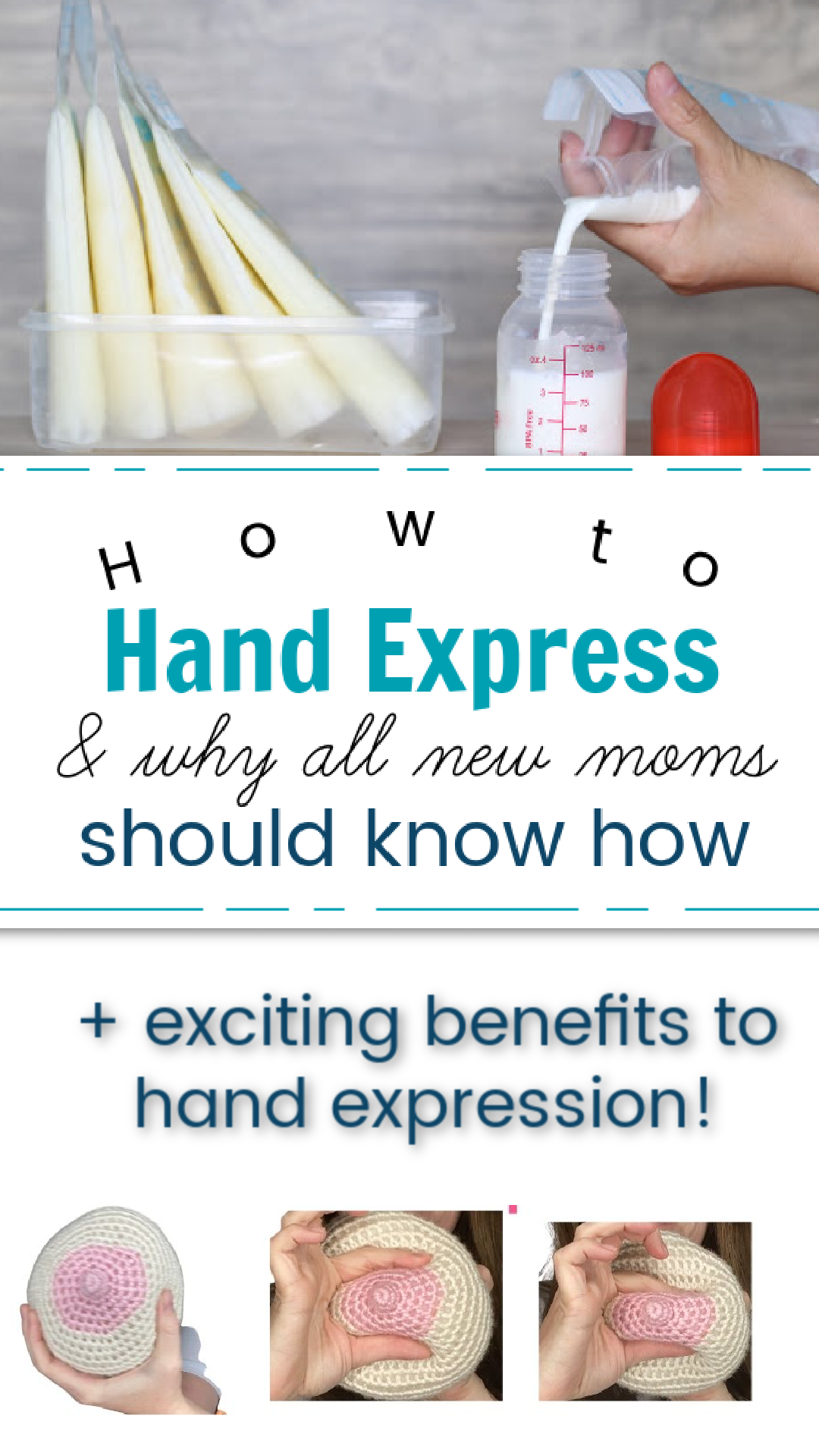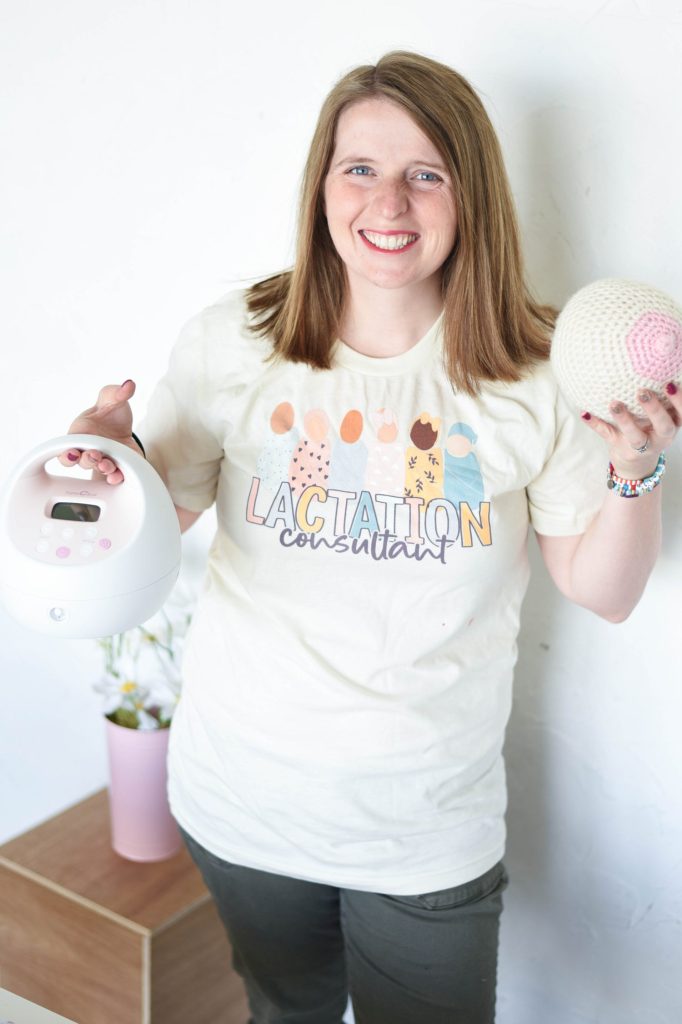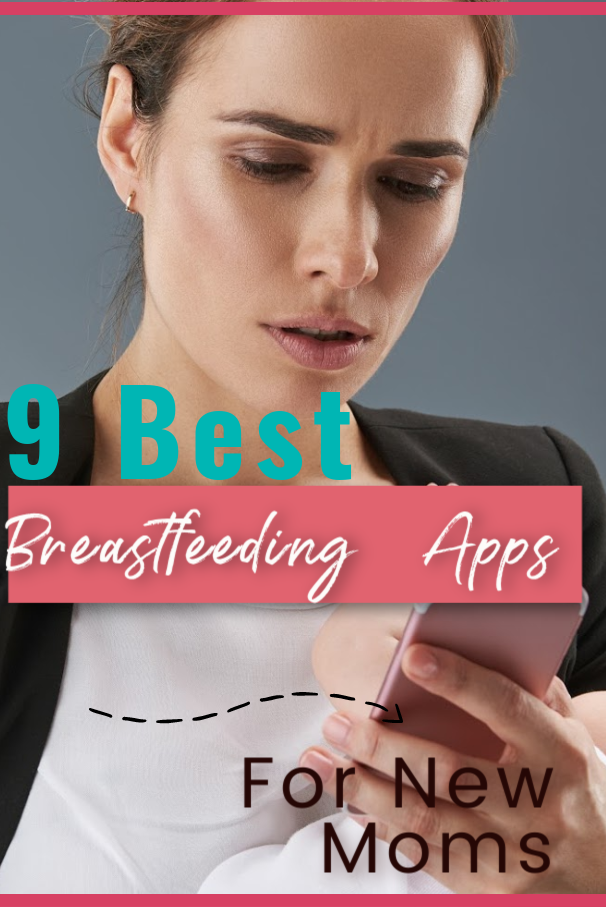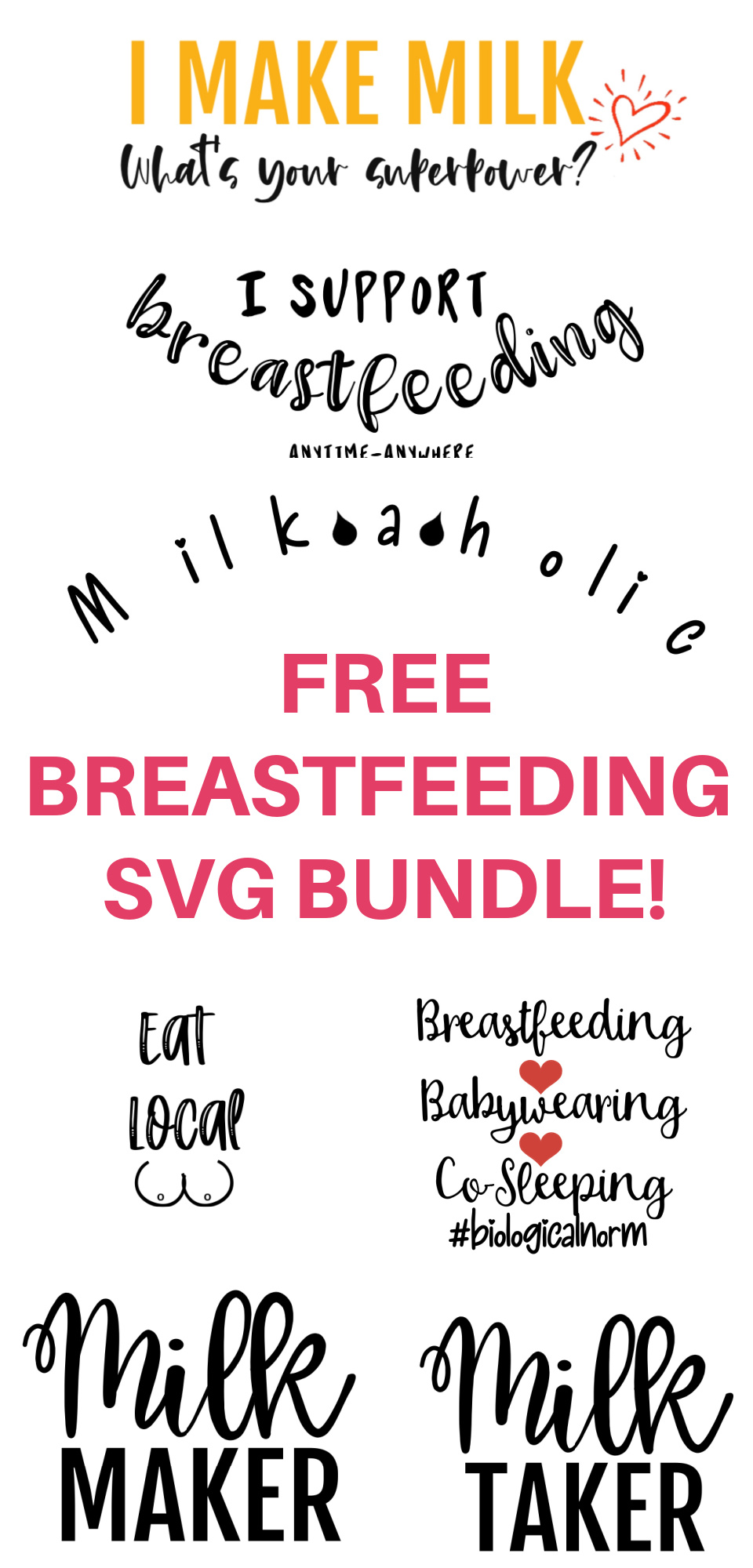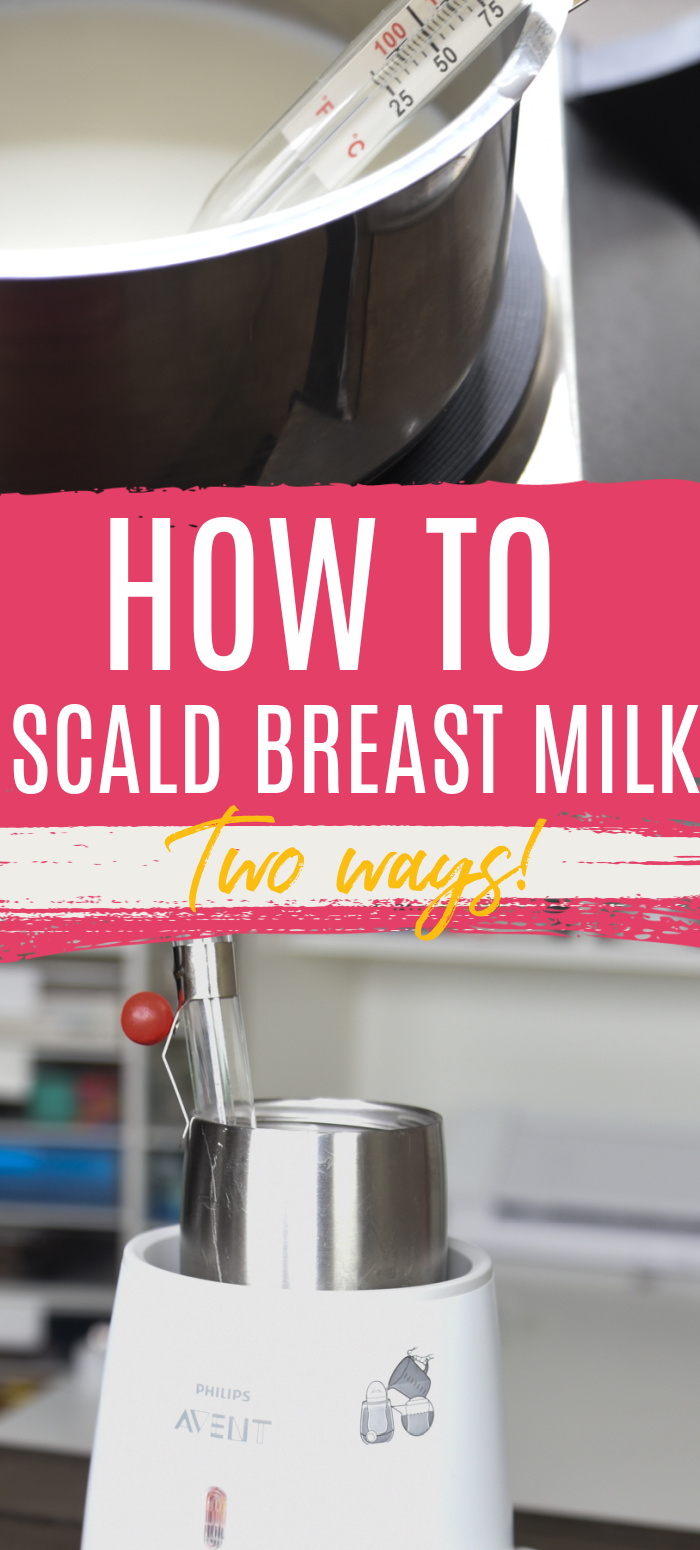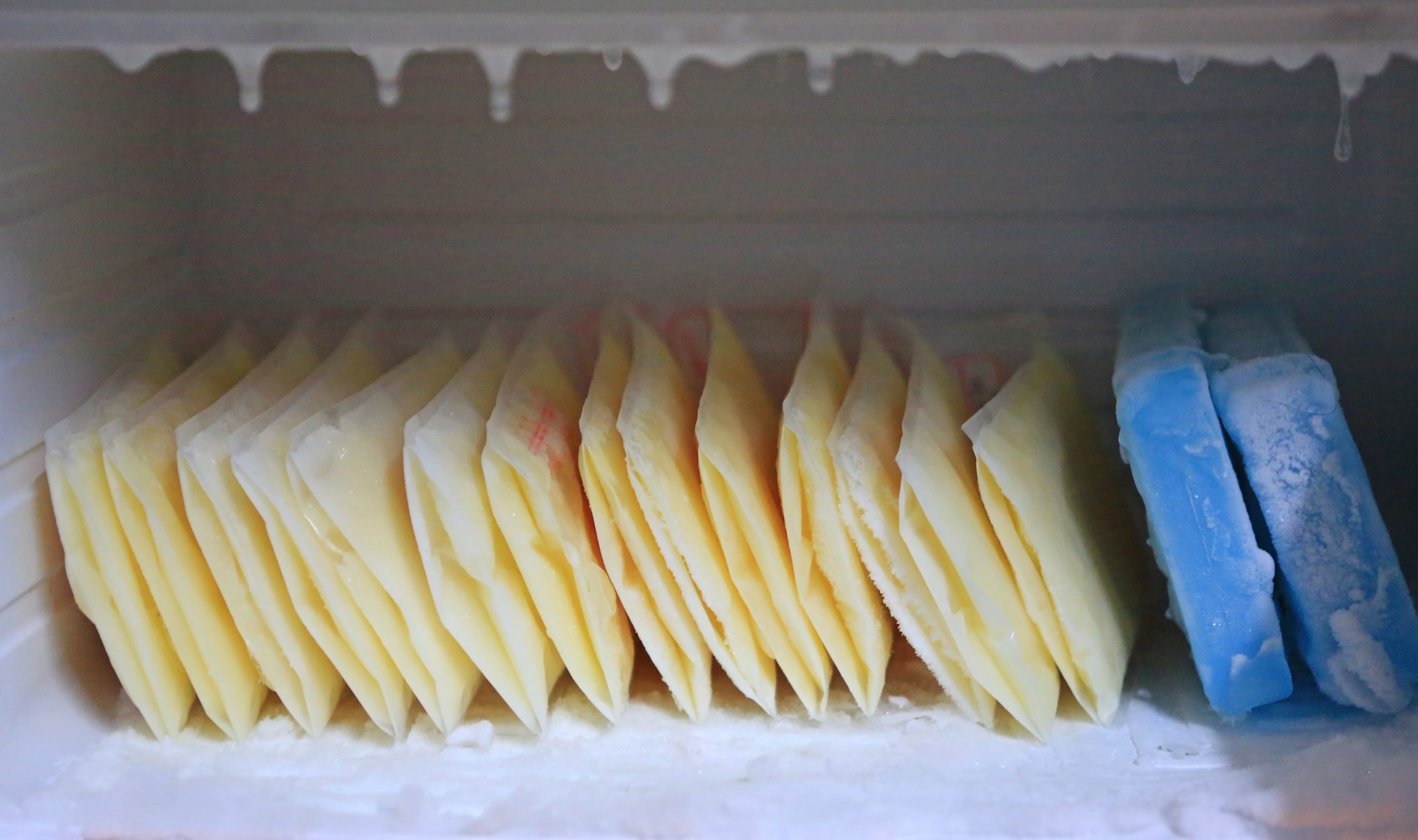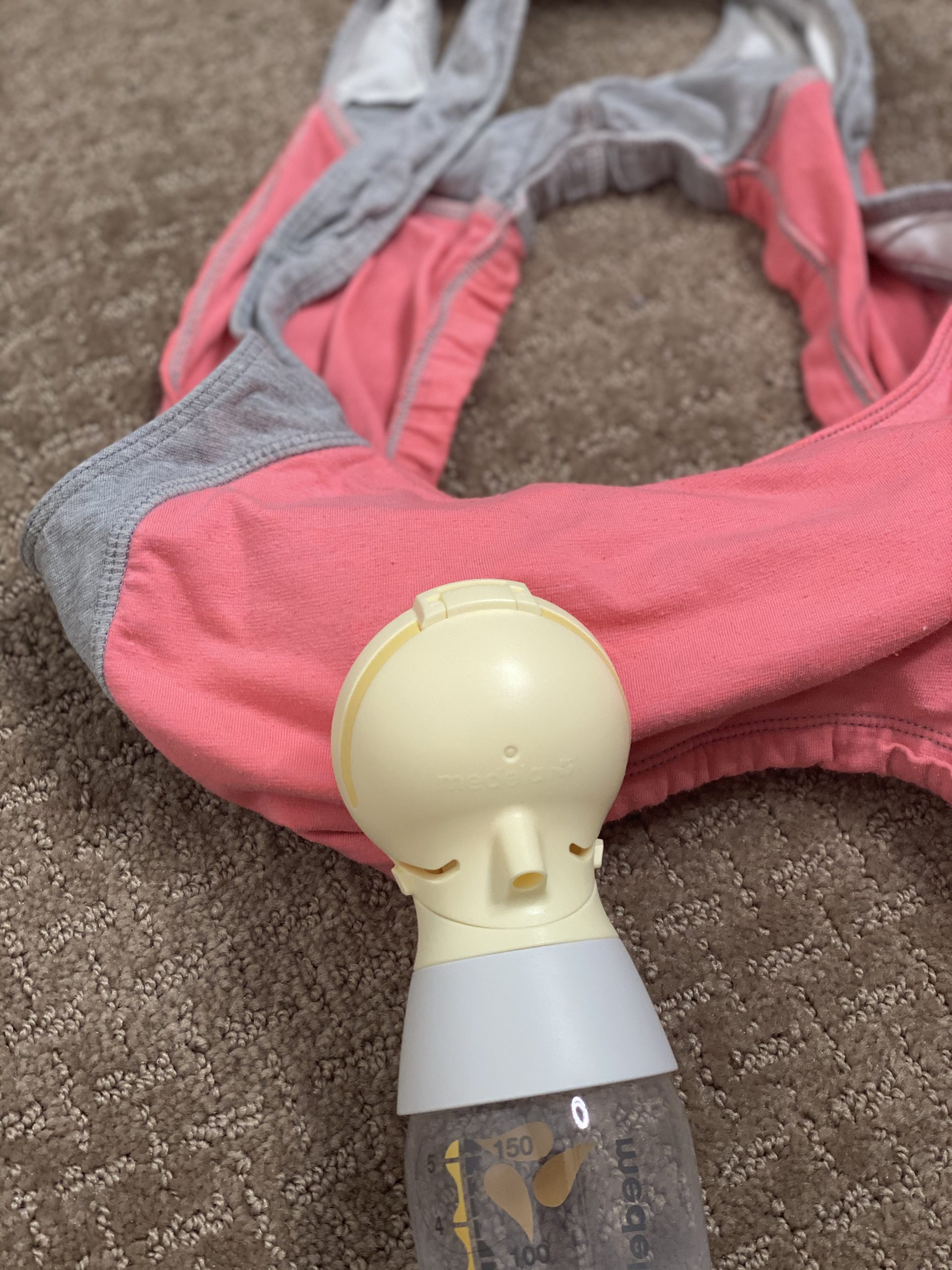Hand expression is a powerful tool that every breastfeeding mother should have in her skill set! This post teaches you how to hand express, why you might want to do it, and some of the exciting research to support the early expression of breast milk via hand expression.
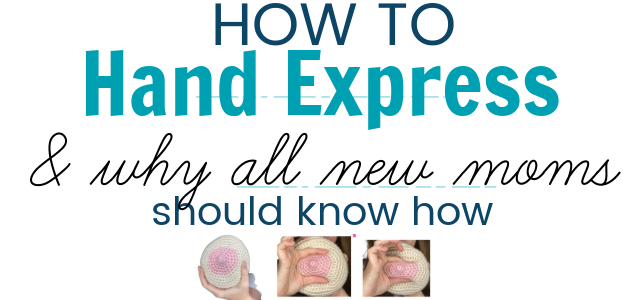
Hand Expression is one of the most amazing tools new mothers have – yet it’s one that is rarely taught and used.
In recent months, I have learned SO much about hand expression, and it’s something that I just want to shout from the roof. This is a skill that I believe ALL new moms should learn.
I truly believe that teaching this skill can and will prevent many issues new mothers and babies may encounter with breastfeeding.
If you are new to breastfeeding or hoping to have a better experience with a second child, make sure you check out one of our comprehensive, online and on-demand breastfeeding classes!
Before I get into the how, let’s talk about the why.
no information in this post should be taken as a replacement for medical advice. Please consult your trusted medical provider for any questions or concerns.
Benefits of Hand Expression

I’ll admit – I didn’t even learn how to hand express until my third baby. It was truly something that no one had mentioned to me, and I was just kind of like, “whatever. If I need to express, I’ll use a pump.”
Oh, how wrong I was! I wish I had known some of these great benefits of hand expression – even with my third baby, and I was dealing with the aftermath of a Gestational Diabetes pregnancy. Even though I did hand express a little bit during that experience, I wish I had known then what I know now!
So here are a few of the benefits of hand expression. Many of the studies done focused on mothers of premature infants, but the information can be applied to all infants. However, hand expression may prove to be especially beneficial for premature infants.
May Improve Supply and Continued Breastfeeding
A study done about hand expression found that when colostrum is expressed during hour one after giving birth, it increased production by 130% by six weeks.
The interesting thing is that the study didn’t find any difference in production at six weeks for those who hand expressed in hours 2-6 and those who didn’t hand express. So the first hour is essential for early, frequent and effective hand expression.
This study wasn’t based on if you were nursing or pumping as well in that first hour. Obviously, prioritize nursing your baby! But whether or not you are able to nurse/pump, try and hand express. I have heard of mothers who have their partner or even a nurse hand express for them, even when they weren’t in the right frame of mind to do so themselves.
I think all mothers can benefit from this, but those mothers who are at a higher risk of having milk supply issues (such as mothers who have had a breast reduction, PCOS, IGT, etc.) may especially benefit.
Beneficial for Exclusive Pumping
For mothers who are exclusive pumping, frequent hand expression during the first three days has been shown to have a positive increase in the amount of milk being pumped at eight weeks postpartum. This study states:
“Mean daily volumes (MDV) rose to 820 ml per day by week 8 and 955 ml per day in mothers who hand expressed >5 per day in the first 3 days. Week 2 and/or week 8 MDV related to hand expression (P<0.005), maternal age, gestational age, pumping frequency, duration, longest interval between pumpings and HOP (P<0.003). Mothers taught HOP increased MDV (48%) despite pumping less.”
Prevention of Hyperbilirubinemia
Jaundice is a common issue among babies, but it can be difficult to deal with. The Academy of Breastfeeding medicine says that “the first and best supplement to prevent hyperbilirubinemia is hand expressed spoon/cup-fed colostrum.”
This supports the idea of nursing and then proving
The Academy of Breastfeeding Medicine protocol recommends ‘‘the first and best supplement to prevent hyperbilirubinemia is hand expressed spoon/cup-fed colostrum.”
Lower Infant Weight Loss after Birth
FirstDroplets.com summarized various studies with this statements:
“Importance of the early weight loss trajectory and how weight loss can be modified by supplementation with spoon fed colostrum
- By 6 hours, weight loss differentials for infants at risk for excessive weight loss are evident.
- By 24 hours, weight. loss ≥5% predicts eventual excessive weight loss.
- By 48 hours, 5% of vaginally born infants and >10% of cesarean born infants have lost ≥ 10% of weight, with nomograms predicting weight loss per hour of life to help determine which infants are at the extremes for expected weight loss.
- By discharge, weight loss correlates with maternal concerns for underproduction at 2 weeks, adding formula by 1 month, and stopping any breastfeeding <6 months.
- Infants liberally supplemented with spoon-fed colostrum lose less weight and begin gaining sooner. Excessive weight loss is rare.”
Higher Fat Content
I try not to encourage mothers to focus on the fat content of their milk (or figuring out foremillk/hindmilk balances!), but this study did find that hand expression actually appeared to have a higher fat content than that expressed from an electric pump.
The conclusion for the study stated:
“We speculate that this difference is due to the presence of hindmilk in the manually expressed milk because the technique of massaging the breast during manual expression is more likely than the pump to eject hindmilk, which has been shown to have higher fat content than foremilk.”
So one way to try and replicated this while pumping is to incorporate “hands-on pumping”.
Great For Expressing in a Pinch
It’s not always convenient to have your breast pump with you – or you may find yourself unexpectedly in a situation where you NEED to express milk but don’t have any other means to do so.
Hand expressing is a very convenient way to do just that. All you need are your hands (and a container – but even then – if you just need to express for comfort/prevent missing a feed, you don’t even technically need something to express into. It might just be a little messier!)
Easier for Expressing Colostrum
This study found that mothers who hand expressed milk got more than 2x the amount of colostrum than those who used a hospital grade pump to express colostrum.
Hypoglycemia
Feeding colostrum via syringe or spoon after you give birth (in addition to nursing your baby) may be able to help prevent some babies from developing hypoglycemia or assist in helping baby get through those lower blood sugars.
May increase Pump Output
When hand techniques (such as massage and compressions) and expression are combined with electric pumping, it may increase pump output (source).
Many mothers like to finish their pump sessions with some hand expression, as they find it’s a good way to get a little bit of extra milk.
Benefits of Prenatal Expression
Under the FAQs, I discuss whether or not prenatal expression is appropriate during pregnancy. But here are are a few benefits:
- Practicing can make it easier if you have/need to do it later on. Trying to learn hand expression in the midst of needing to do it can be overwhelming.
- If you’ve struggled to produce milk in the past (especially during the early days of breastfeeding), having colostrum that has been harvested and frozen can be helpful after you give birth
- If you have Gestational Diabetes (or have a history of LGA or SGA babies), your baby will be at a higher risk of having low blood sugar in the first 24 hours after giving birth. It is becoming a more common recommendation for express colostrum after the 36th week of pregnancy to be able to give after you give birth. You can definitely express after you give birth, but some moms appreciate having it available.
There is no research to support hand expression before giving birth as a means for increasing supply postnatally.
How to Hand Express Breast Milk

Now let’s talk about how to express breast milk.
First of all, you need to make sure you wash your hands with soap and water. Because you will potentially be touching your breast milk, you need to be as sanitary as possible.
Second, get a clean cup or other container (see below for different options) to express into
And then follow these instructions:
- Try to relax and get comfortable, it may be helpful to massage your breasts gently this should help get your milk flowing.
- With one hand cup your breast and place your other hand on your breast in the “c-hold” forming a C shape with your thumb and forefinger.
- Hold the clean container below your breast with your hand in the C shape.
- Gently press back and then squeeze.
- Be sure to keep your fingers 1-2 inches away from your nipple around the areola- you do not want to be squeezing your nipple.
- Build a rhythm and repeat this process, expressing milk out of your breast into the container.
- Be gentle with the whole process, this experience should not hurt at all.
- As the flow of your milk stops switch breasts, after the milk on your second breast stops return to the first and try a different hold (the U-hold, or the V-hold), view the graphic below for reference.
- Continue this back and forth method until your milk flow comes to a slow drip or completely stops.
- Feel free to immediately feed your baby the milk or seal it in a food-grade safe container to feed to your baby later. It can be frozen!
Here is a TikTok I did with a few other lactation professionals that might demonstrates hand expression:
@thebfmama Joining forces with @thebalancedboob ##handexpression ##liquidgold ##breastmilkisbest ##lactationconsultant ##newmomhacks ##newmomtips
♬ original sound – Katie Clark, CLE®
Hand Expression Printable Handout
Below you can download a PDF of the image shown above (just reformated to be 8.5×11″). Feel free to use this at a mom group – we just appreciate if you give us credit!
[purchase_link id=”2819″ text=”Purchase” style=”button” color=”blue”]
Container for Hand Expression
You don’t need to use anything fancy for hand expression! All you need is a clean container. Here are a few of my favorite options:
- Clean medicine cup (like the kind that comes with liquid medicines such as Tylenol)
- Medical syringe (I recommend the ones that come with a cap for easier freezer storage)
- Haakaa silicone colostrum collectors – awesome for a more reusable option
- Spoon
- Silverette Nipple Cups
- Kindest Cup (this would be better for mature milk and expressing in larger amounts)
FAQs about Hand Expression
Should I hand express even if I nurse my baby?
Absolutely! This can be beneficial for all babies. I definitely recommend prioritizing nursing your baby and getting them to the breast. But if you are hand expressing and spoon feeding after nursing, it shouldn’t hurt your breastfeeding relationship (and likely will help).
Hand expression after the first few days will still be a helpful skill to know – especially if you aren’t pumping – in case you get in a pinch where you need to express!
Can I hand express during pregnancy?
Expression during pregnancy is somewhat of a controversial subject. This is because any type of expression can increase oxytocin, which can lead to pre-term contractions.
I would absolutely talk with your medical provider before hand expressing. I personally wouldn’t do it until at least 36 weeks, and if you are at any risk of pre-term labor, I would not recommend hand expression.
However, as I mentioned above, there may be situations where it will be especially helpful. I think it’s helpful to at least try it out for a short period of time just to get an idea of what it feels like.
But again, please talk with your medical provider first.
Should I feed the milk I hand express?
You can! I’ve mentioned some of the benefits of spoon feeding colostrum after nursing and after birth. This can be really helpful for those babies that are more sleepy, as it may help to give them more energy to have more efficient breastfeeds.
Is hand expressed milk just foremilk?
Nope! Hand expressed milk can be just a mix of the different stages of breast milk as pumped milk. If it’s expressed at the end of a pumping session, it might even be the fattiest. As referenced above, one study found that hand expressed milk was actually fattier than pumped.
What if hand expression hurts?
Hand expression shouldn’t hurt. It may feel a little different at first, but if it’s hurting, you may be doing it too hard or using an incorrect technique. If it’s hurting, definitely work with an IBCLC to help with your technique.
What if I had a c-section?
I have a lot of moms asking if this can/should be done after a C-section. A C-section can be difficult for some moms, and some moms may feel a little out of it or uncomfortable doing anything as they are being stitched up. And that’s okay!
However, this can absolutely be done after a C-section, and if you are feeling up to it, I would definitely hand express – especially if you aren’t able to do skin to skin/latching immediately after the c-section. I think this might be a wonderful way to counteract some of the hurdles that can come with breastfeeding and c-sections.
Some mothers may feel comfortable asking their partner or a nurse to help them hand express during this time.
Is pumping or hand expression better?
This is another question I get – moms wonder if they should pump right after birth in addition to nursing. I would recommend hand expression, simply because it’s going to be easier right after birth, and many moms find it more comfortable. I also don’t typically encourage regular pump use right after birth unless necessary (or the mother is choosing to exclusively pump).
Long term, both are beneficial – especially when done together!
What happens if I don’t do this?
That is a-okay! Sometimes we share information that is really exciting, but it makes new moms feel sad, overwhelmed, or discouraged – especially if they don’t do it.
Guess what – you will probably be just fine. Speaking from personal experience – I never hand expressed with my first two. I would say that MOST moms fall into this category, and most go on to have successful breastfeeding relationships.
But I also believe it’s really important to share information like this so mothers can make even more informed decisions that may help them long term. As I said earlier, I believe that early hand expression may help some new parents avoid issues with their milk supply or with their baby.
Hand milk expression is not always super easy the first time you try, but it is an extremely handy thing to know how to do! You don’t want to find yourself in a pickle with engorged breasts and no pump or baby around to relieve you. For more information regarding breast pumping methods, check out some of the articles below.
- The Haakaa Silicone Breast Pump: What All New Moms Should Know
- How Much Breast Milk in a Bottle – Expressed Breast Milk Bottle Calcualtor
- The Five Best Hands-Free Pumping Bras (For All Budgets!)
- Free Pumping and Milk Supply Kit
- Breast Milk Supply and Pumping Class
